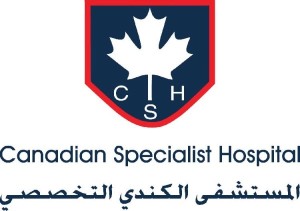 The healthcare industry is notorious for the amount of paper it consumes. From lengthy patient records to scribbled prescription notes, hospitals and healthcare organisations are always grappling with the problem of what to do with its masses of paper.
The healthcare industry is notorious for the amount of paper it consumes. From lengthy patient records to scribbled prescription notes, hospitals and healthcare organisations are always grappling with the problem of what to do with its masses of paper.
“With around 155 patients, the volume of these files is big. You’d need an area bigger than our courtyard to store them, and the number of patients is also increasing,” explains Ali Ghunaim, Director of Information Technology, Canadian Specialist Hospital, who has taken it upon himself to reduce the amount of paper that his hospital consumes.
Around two-and-a-half years ago, Ghunaim set out to digitise Canadian Specialist Hospital’s records, processes and statements―indeed, he wanted to digitise just about everything that was previously done through paper. The implementation started with generating electronic healthcare reports for out-patients, and in the coming months, will finish with a mobility system that allows doctors and professionals to access everything they need through tablet computers.
It was always going to be an ambitious project, but according Ghunaim, it simply has to be completed in the next few months, as per directives from the Dubai Health Authority (DHA), which wants patient records, insurance claims and prescriptions to be completely digitised, in line with the push to become a smart city.
“As per the requirements from the DHA, everything has to come through the DHA system and be integrated with it. Also, the insurance companies cannot receive any claim without submitting through the e-claims in the system,” Ghunaim explains.
“From 2010, we started with the test communications, and then we did it for out-patients and two or three insurance companies. The second phase is that, by early 2014, it must be implemented for in-patients and out-patients, and will be interfacing with the DHA and the insurance companies.”
To get the ball rolling, then, Ghunaim spoke directly with Sage, a vendor that specialises in ERP solutions. The two parties decided to interface Sage’s solutions with IDMsys, a set of modular software applications that automates patient management. This is how reports are now generated at Canadian Specialist Hospital. Not only was this the most effective pairing, but it was also part of the requirements from DHA.
“Also, I have many, many types of modules, intelligent systems. We’ve built the dashboard in-house, and we also have some through the Sage company. And everything is integrated with the system, from the beginning,” Ghunaim says.
Instead of writing out physical reports with a pen and paper, then, doctors are now expected to enter names, complaints, diagnoses and treatments into the system, which is also integrated with the billing system. To protect patient confidentiality, only authorised professionals can access records, and an international coding standard is applied to all pieces of information. It’s simple enough to work―when a patient joins the hospital, the doctor simply fills out the electronic form, enters all the pieces of information, and the rest is automated.
Naturally, it took a little while to train up doctors on how to use the system, but after a few months, staff generally began to accept it, according to Ghunaim. “For at least two or three months, it took time to train the doctors and to train them how to use the system, and how to use the international coding. Many doctors aren’t familiar with international codes like ICD10, the diagnostic international code. Doctors know about diagnosis as a description, not as the coding,” he says.
The system takes care of everything―from patient records and e-prescriptions to billing and insurance claims. “Now, when you submit all the billing, it’s not submitted by paper―it’s done through the system. There’s a number for the e-claim, for the diagnosis, for the doctors, and it’s interfaced with the lab. It must be everything in an automated system,” Ghunaim says.
To accommodate such a far-reaching implementation, however, Ghunaim had to seriously beef up the hospital’s back end. A year-and-a-half ago, then, he upgraded all of the servers and storage devices, using HP SAN storage and servers, which have been partially virtualised. And for his database, Ghunaim uses Oracle integrated under a Linux operating system.
“The capacity for the images and the archiving and whatever else goes through the system had to be fit for five to six years,” he says.
Already, Ghunaim’s investments in the system have begun to pay dividends. Not only is he in line to meet the early-2014 deadline, but the Canadian Specialist Hospital has also been recognised by HIMSS, a global, non-profit organisation focused on providing better health through IT. HIMSS ranks hospitals and healthcare organisations as they move through the various stages of digitisation, and according to Ghunaim, as of 2012, the Canadian Specialist Hospital was the number-one in the UAE when it came to e-pay prescriptions.
“The survey has stages, from stage one up to stage seven as standard stages. Now the Canadian Specialist Hospital is between stage four and stage five. I hope that, for this year, we’ll be coming in at least stage six,” he says.
Before long, Ghunaim will have implemented a mobility programme that’s integrated with his paperless system. Though he hasn’t yet decided whether he will provide doctors with Android or Windows 8-based tablets, he’s confident that they will find it much more convenient to work through the system once they have their devices.
“The doctor, from anywhere, can see all the history for the patient, and can decide and request procedures for that patient or reduce drug doses, or whatever. You can change the medicine―whatever you like―from anywhere,” he says.
This final phase of the project is expected to be completed by early 2014. That notwithstanding, Ghunaim is pleased with the progress he has made with this paperless project, and he’s confident that his digital dream will come true on schedule.





